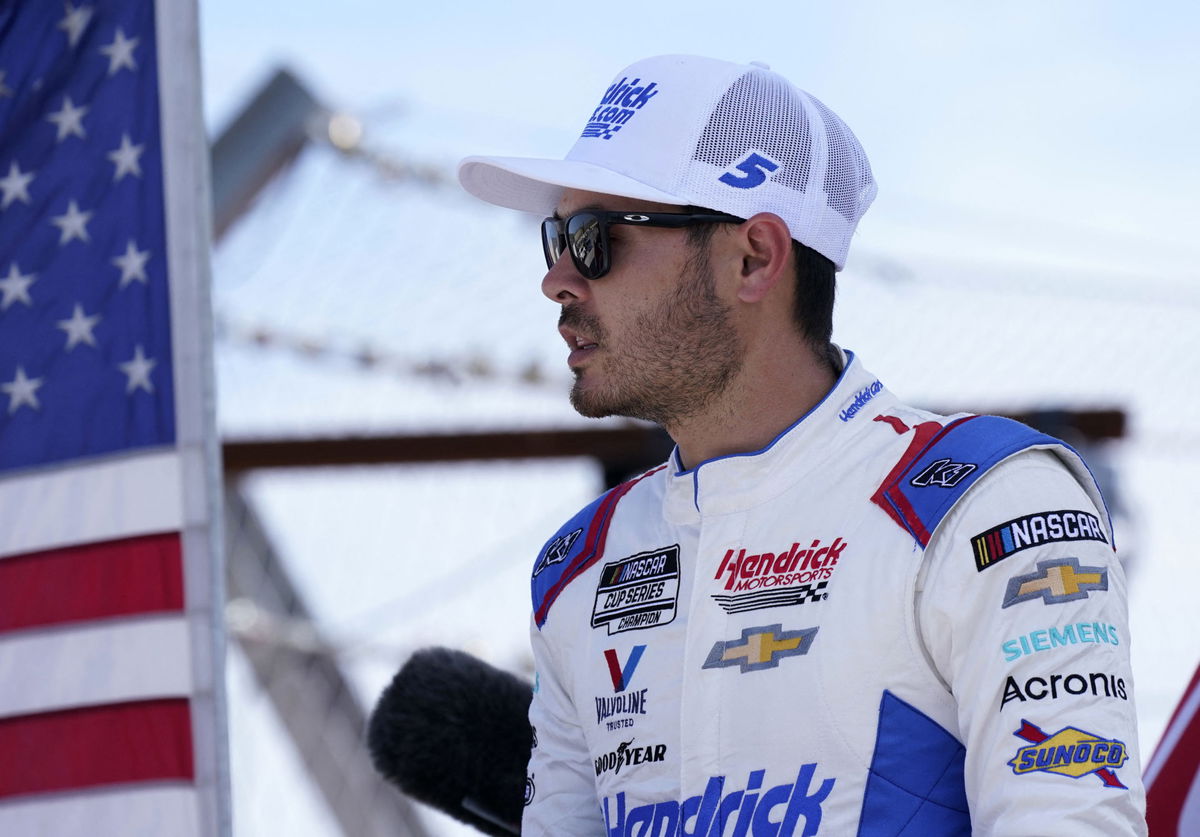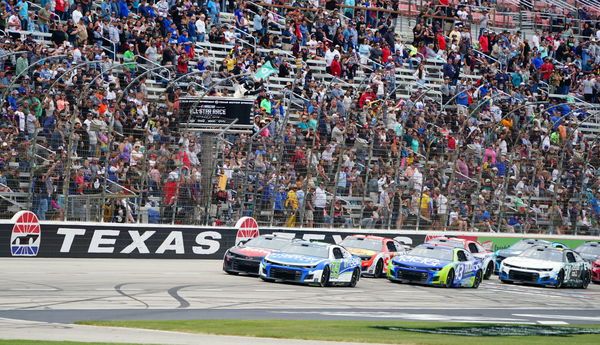
USA Today via Reuters
Mar 27, 2022; Austin, Texas, USA; NASCAR Cup Series driver Kyle Larson (5) before the start of the EchoPark Automotive Texas Grand Prix at Circuit of the Americas. Mandatory Credit: Mike Dinovo-USA TODAY Sports

USA Today via Reuters
Mar 27, 2022; Austin, Texas, USA; NASCAR Cup Series driver Kyle Larson (5) before the start of the EchoPark Automotive Texas Grand Prix at Circuit of the Americas. Mandatory Credit: Mike Dinovo-USA TODAY Sports
For nearly three decades, Texas Motor Speedway has been a monument to NASCAR’s grandest ambitions and high-speed drama. Opened in 1996 and hosting its first Cup Series race in 1997, the sprawling Fort Worth facility quickly carved out a reputation for electrifying finishes, intense rivalries, and a spectacle that often matched its massive 191,000-seat capacity.
Watch What’s Trending Now!
Legendary moments, like Dale Earnhardt Jr.’s first Cup win in 2000 and Carl Edwards’ dramatic fuel mileage victory in 2008, cemented Texas as a cornerstone of the NASCAR calendar. Its unique 24-degree banking and quad-oval layout, modeled after Atlanta and Charlotte, promised fast, side-by-side racing and quickly became a proving ground for champions.
Yet, as the years have passed, the track’s legacy has come under scrutiny. Drivers and fans have become increasingly vocal about the evolving, and sometimes frustrating, nature of the racing product. Now, as the stars returned to Texas, a familiar concern is echoing through the garage.
ADVERTISEMENT
Kyle Larson voices his frustration
Kyle Larson’s post-race comments at Texas Motor Speedway put a spotlight on one of NASCAR’s most persistent headaches. The ongoing struggle with the track’s aging surface and configuration. When asked about the notorious bumps in turns three and four, Kyle Larson was blunt: “It didn’t change overnight… It was no different feeling to me.” Larson won the Xfinity race the day prior, and that race had 11 cautions, and today’s race had 12 of its own, reflecting Larson’s sentiments.
The main problem was the bump on Turn 4, which caused issues for a lot of drivers. A prime example came on Lap 125. Josh Berry’s promising run ended abruptly after he hit the notorious bump. Berry, who had led 41 laps and was running near the front, explained, “Then caught the 51 (Cody Ware) and was working on the 51 and hit that bump and got loose.”
ADVERTISEMENT
The car slid into the outside wall, causing significant damage and effectively ending his competitive day. Berry’s experience highlights exactly what Larson described. When asked if he wants to see NASCAR change something at the track, Larson was stoic in his response, saying, “Can you imagine what it’d cost to do something here? It doesn’t seem to be aging… The bumps keep us from moving up the track in three and four.”
This turn also ended the race for Kyle Busch, who was third when he spun out after hitting the bump on Turn 4. NASCAR repaved the track in 2017, but such issues persist. And with the sanctioning body already spending loads of resources on reviving older tracks like Bowman Gray and Rockingham, it seems unlikely that Texas would change anytime soon.
ADVERTISEMENT

USA Today via Reuters
May 22, 2022; Fort Worth, Texas, USA; NASCAR Cup Series driver Daniel Suarez (99) and NASCAR Cup Series driver Tyler Reddick (8) lead the pack to a restart during the All-Star Open at Texas Motor Speedway. Mandatory Credit: John David Mercer-USA TODAY Sports
The Lap 172 multi-car wreck involving Bubba Wallace, Joey Logano, Ryan Blaney, and others underscores how narrow margins and unpredictable handling on the Texas surface can trigger chaos. Wallace grazed the wall exiting Turn 2, lost momentum, and was turned sideways. He collected several cars and sent multiple drivers to the garage. Wallace admitted, “I was trying to give the 22 (Logano) room, and then just got the wall and started chaos.”
Such incidents are not isolated. The 2025 race featured 12 cautions and multiple crashes, many attributed to the track’s lack of grip and challenging bumps. Kyle Larson further noted that a dramatic reconfiguration like the Atlanta-style superspeedway conversion could bring immediate, exciting crashes and races. However, he was quick to point out that it would also take years to mature and lead to oversaturation. “We already have so many speedway races.”
ADVERTISEMENT
His comments echo a growing sentiment in the garage. Texas needs change, but finding the right solution without simply copying other tracks or breaking the bank remains NASCAR’s biggest challenge.
Next stop: Kansas Speedway, a chance for Larson to redeem himself
Kyle Larson led the most laps at Texas, with 90, and won stage 2 as well. He was also leading the race with under 40 laps to go, but still finished P4! This was surprising for many, as Larson is not usually one to give up track position that easily. However, a slew of restarts led to Larson getting bested eventually, as he has admitted to enjoying long green flag runs over frequent cautions. However, Kansas Speedway should be smoother sailing for the Hendrick Motorsports #5.
ADVERTISEMENT
NASCAR heads to Kansas Speedway for the AdventHealth 400 on May 11. Drivers and teams will find a very different challenge compared to the bumpy, controversy-laden Texas Motor Speedway. Kansas, a 1.5-mile tri-oval, is known for its smooth surface, moderate 15-degree banking. It has a reputation for delivering fast, competitive racing without the persistent issues that plague older tracks like Texas, and Larson is the defending regular season champ at Kansas!
Last year, Larson edged out Chris Buescher in a scintillating photo finish that was one for the ages. 0.001 seconds is what separated the two drivers! In contrast to how Texas usually is, Kansas had just seven cautions, and included a 170+ lap green flag run last May. Ironically, it was a late caution ignited by a Kyle Busch spin that helped Larson shift up to third off pit road and win that race. So, while Larson will be licking his wounds from a disappointing outing at Texas, he can enter Kansas with history on his side.
Do you think the #5 will redeem himself next week? Let us know in the comments!
ADVERTISEMENT
ADVERTISEMENT
ADVERTISEMENT

